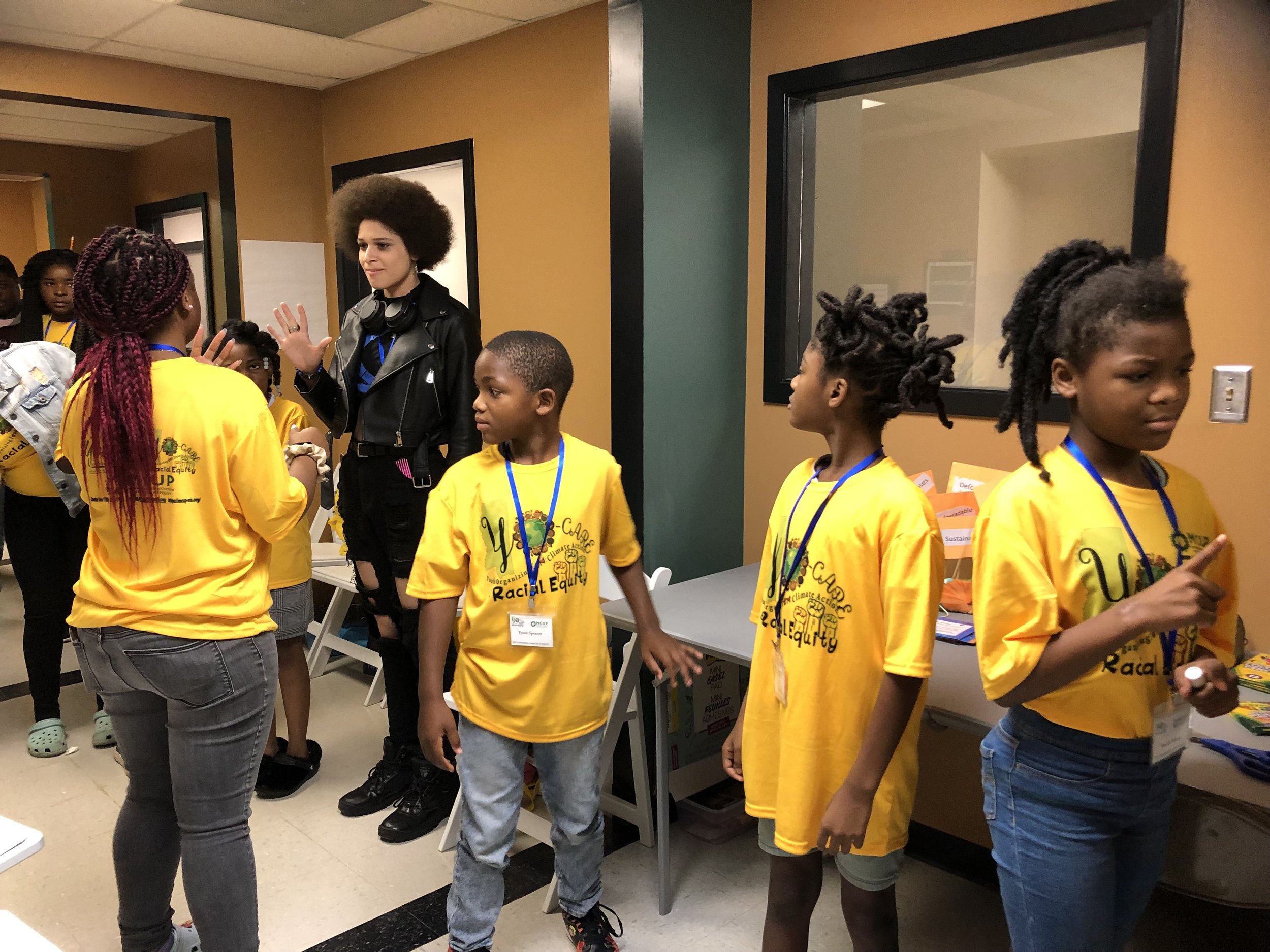
An Eco-hood Does Good!
Building Community from the Inside Out
Student participant of the Southeast Regional Environmental Summit
We use 'placemaking' to describe our work because we help communities turn lifeless and unwelcoming spaces into great places where people want to be.
~Project for Public Spaces
This program challenges participants to rethink community design and structure with an eco conscious frame of mind. It also prompts young people to look more deeply at what it means to love unconditionally and how to show compassion on a daily basis.
This is accomplished through the following:
mini-research
collaboration
introspective activities
skits
team building exercises
In addition., participants design an ecologically sound and vibrant community based on their collective vision and are encouraged to dream up something wonderful……a place of safety, beauty, friendship and support for all residents. During this process, students learn about renewable energy, our carbon footprint, rain water catchment systems, auto sharing, and more. They apply these to the community they construct.
An Eco-hood Does Good! naturally includes STEM activities, due to its design and build format. Participants may build devices such as windmills,, charging stations, bicycles, wagons, and solar powered cars.
Design and Build Kit Coming Soon!
This starter kit provides teachers and parents with samples and supplies to begin an Eco-hood project with their students. An instruction booklet is included along with numerous lessons for children ages 7 to 16. The entire project can be stored away in shoebox-sized plastic bins.
Coming Fall 2025!
Students engage in team building exercises before rolling up their sleeves.
Eco-hood for grown-ups!
Although originally designed for young people, An Eco-hood Does Good! has been modified to include adult programs as well. Participants engage in very similar activities with greater emphasis on collective visioning and transforming existing neighborhoods into more cohesive, interactive places to live. Successful, real life examples are shared and together, participants build a model that is possible to duplicate in real time and space.




